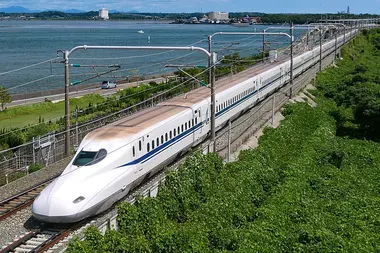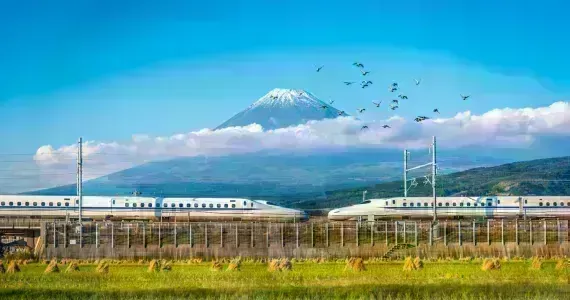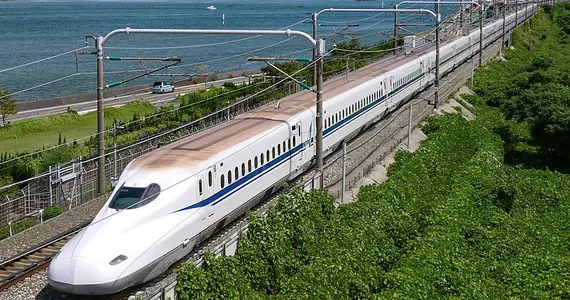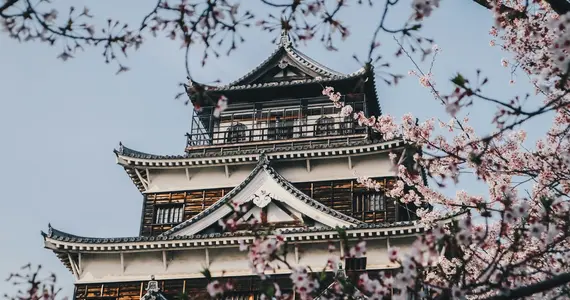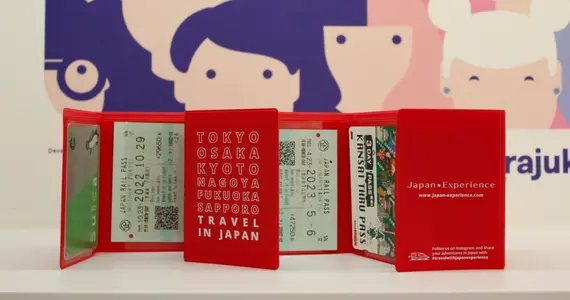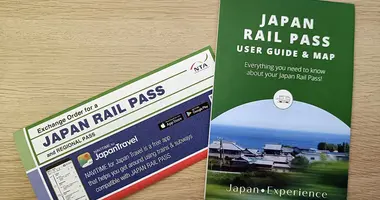The Japan Rail Pass vs. the SUICA Card—the perfect combination when traveling in Japan!
Many wonder if the Japan Rail Pass or an IC Card like the SUICA are better options when traveling Japan. However, most travelers will find that both are great tools to have to use in conjunction with each other to get around Japan!
When researching for a trip to Japan, both the Japan Rail Pass (often shorted to JR Pass) and IC Cards such as the SUICA, PASMO, MANACA, ICOCA, and SUGOCA often come up as means of traveling throughout the country. This leads many prospective travelers to wonder which of the two is the best option.
In actuality, for most travelers, it isn’t really a question of “which” is the better option. This is because both the JR Pass and IC cards are great tools for getting around Japan that are great for using in conjunction with each other. For those who don't know, an IC card is a means of paying for public transportation that can be charged and recharged with prepaid credit. They're commonly used in major cities, and Japan has its share of IC cards that operate like the Metro Card in New York City or the Oyster Card in London.
A number of IC cards in Japan are available in both physical and electronic versions for Apple iOS, though physical versions of the PASMO and SUICA cards have been limited. However, they will start up selling again later in 2025. This differs from passes like the Japan Rail Pass that grant unlimited access to certain transportation facilities for a given usage period. For visitors to Japan, specifically, the Welcome SUICA and Welcome E-Suica (the electronic version) are great options. This is because they can be had without a 500 yen deposit but then deactivate after 28 days, plenty long enough for a majority of itineraries.
As they are a versatile option, on some occasions, just an IC card may suffice if your travels are confined to one city, but using both allows for long-ranging travel across the Japanese archipelago. If your itinerary doesn’t fit with a Japan Rail Pass, a look at some regional passes or individual train tickets to use along with your IC card is well worthwhile!
- Get both a Japan Rail Pass (or regional pass) and IC Card when traveling around multiple locations in Japan, especially between major cities.
- Get train tickets and an IC Card if you are traveling between just two or three cities.
- Use just an IC card if you are traveling primarily in one city.
Let’s take a look at the details on each of these options to see what combination may be best for you!
Public transportation in Japan
Japan as a country is world-renowned for its well-developed public transportation, largely revolving around rail and bus travel. The world’s first high-speed bullet trains were introduced by Japan back in 1964. Into the modern day they serve as the primary means of traveling between major cities like Tokyo, Osaka, Kyoto, and Fukuoka. Within these major cities, using public trains and buses is the norm for getting around, and for many travelers, this will be applicable!
Different train types and train lines are operated by different companies and organizations. However, the largest of these is Japan Railways, which operates a majority of local lines as well as all Shinkansen bullet trains in Japan. This is important to know for navigating and using public transportation in Japan!
The Japan Rail Pass and Regional Passes

The voucher for the Japan Rail Pass
@Japan Experience
As previously mentioned, the Japan Rail Pass is a popular option for visitors to Japan, and it is issued by Japan Railways (shortened to JR). Essentially, this pass allows unlimited access to a majority of JR facilities, such as Shinkansen bullet trains (though an additional charge is required for express Nozomi Shinkansen trains), express trains, local trains, buses, and even ferries, for one price! It is available for intervals of 7 days, 14 days, and 21 days. Since it covers JR transportation that goes locally within cities, a JR Pass can be used for more than just long-distance travel! The Yamanote Line in Tokyo and the Loop Line in Osaka are operated by JR and can be ridden with the Japan Rail Pass! Seat reservations are included with these passes too and can be requested at stations!
More information about the Japan Rail Pass and its usage can be found here.
Regional Passes operate much like the Japan Rail Pass but are only usable within a given coverage zone. Because they aren’t meant for national usage, they come at more affordable prices with more specific usage criteria and are great options for travelers who have itineraries in more concentrated regions. For example, if you are largely traveling just through Kansai, the Kansai Wide Area Pass may be a good pass to look into. If you are going from Tokyo, through the Japanese Alps area, and then out to Kansai, the Hokuriku Arch Pass may be a good option! While a majority of these passes are distributed by JR, some are from other companies, such as the Kintetsu Rail Pass and the Odakyu Hakone Free Pass.
More information about the differences between the JR Pass and regional passes can be found here.
IC Cards
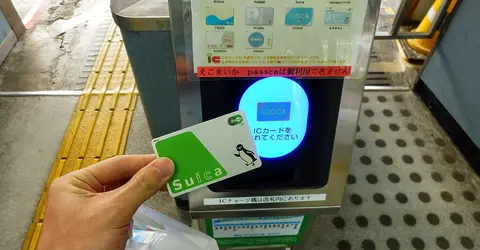
©タチヤマカムイ, Wikimedia Commons
IC Cards in Japan are chargeable cards that can be used for accessing public transportation in Japan. As previously mentioned, IC cards aren't passes like the JR Pass or the regional passes. These are used as an alternative to individual tickets or passes for trains for convenience and in order to save time, as commuters have to simply scan in and then out. The fare will be dedicated to the amount available on the IC card. For residents of these major cities, an IC Card, be it a physical one or one available on mobile wallet applications, is an everyday essential! Physical PASMO and SUICA cards in Tokyo have halted sales for a bit but will start selling once again on March 1st, 2025 in Japan. They are available for e-wallet applications, however, and Japan Experience will start selling Welcome Suica starting from April, 2025.
Different cities have different IC Cards, and the main ones, such as SUICA and PASMO in Tokyo, ICOCA in Kansai, Kitaca in Hokkaido, and SUGOCA in Fukuoka, are largely able to be used universally throughout other parts of Japan. However, there are some local train lines and buses that require a city-specific IC card to access, more commonly found in more rural parts of Japan. Be sure to do some research and ask station staff about what lines can use these IC cards!
Beyond transportation needs, IC cards can even be used to purchase items at many stores and vending machines and even be used to rent lockers within stations. This makes them a generally great Swiss army knife for traveling around Japan!
Train Tickets
Of course, conventional tickets can be purchased for transportation across Japan. At stations for local travel, a ticket with a specific fare amount must be purchased depending on the destination. Shinkansen and limited express tickets can be purchased as well at designated stations. There are kiosks available for purchasing tickets, but at JR offices (known as "Midori no Madoguchi") tickets can be purchased as well. For these trains, however, it is suggested to purchase tickets ahead of time to assure space on the train and a reserved seat.
Take a look at these different travel products for getting around Japan!
What is the best option for you when traveling to Japan?
Ultimately, for most travelers, there isn’t one specific option listed above that served as best, as most people will be using a combination of two or more during their time in Japan. The Japan Rail Pass can be practically used all over Japan, especially for use with Shinkansen and limited express trains for extended, long-distance travel.
For visitors who have an itinerary that is covered with the JR Pass and want the convenience and ease of use it provides, then having one is a good option! Additionally, having a specific regional pass that meets your travel criteria is a great alternative too!
Within cities as well, the JR-operated train lines will be available for use! But there are some train lines that may be operated by different organizations that unfortunately aren’t available with the JR Pass, such as the Odakyu and Keio Lines in Tokyo and the Hankyu and Midosugji Lines in Osaka.
In these cases, it is good to have an IC card option available to get to certain neighborhoods; even if the IC card just has 1,000 to 2,000 yen on it, it can be used well in conjunction with a JR Pass or regional pass!
However, if your itinerary is fairly rigid and between only one or two cities over the span of just a few days, simply having Shinkansen bullet train ickets in conjunction with an IC card will work fine as well. Furthermore, if you have an itinerary that is just within one specific city, an IC card that is charged as needed will fulfill your needs!
Book a tour and have your travel needs organized!
Our self-guided, small group, and tailor-made tours have your transportation needs included, be it with Shinkansen bullet train tickets, IC cards, and even regional passes and JR Passes provided to travelers depending on their itineraries! If you're looking for a great way to explore the country with the input and assistance of experts in Japan travel, our tours are a great option!
Learn more about our tours here.


